
A second trip to Japan
For the photo gallery, click here
Part 1: Culture and Distilleries (Part 2)
My trip was confirmed last minute and I managed to secure a delivery of my JR Japan Pass for the train at the airport in Zurich on Friday before my departure. The JR Japan pass is a train pass for foreigners that allow you to use the JR train network in Japan, with the exception of the fastest versions of the shinkansen, the Nozomi and the Mizuho.
Day 1 (in Japan)
The flight went very smoothly, except that that the entertainment system was not working. Landing took place at 08.01, cleared the customs by 08:26, and went straight to the JR Easter Railway Ticket office to convert my JR Pass voucher into a JR Pass that could be used in the train. The queue was rather long and finally by 09.11, I got my pass, rushed to the gate and jumped into the train before it left.
On my way to Tokyo station, I could already appreciate the view of blossoming trees. Last time, I made the travel from Tokyo to Narita airport by the shuttle bus, but the view and comfort is agreeably more pleasant by train. From Tokyo station, I took then the bullet train (shinkansen) to Himeji, a journey of about 3h. I already took the TGV a few times, but the speed of the shinkansen was impressive, especially in urban areas.
After my mid-afternoon arrival and luggage drop off at the hotel, I moved then to the castle to hear the last music notes of the blossom festival that took place on the ground of the castle. The view of all the trees blossoming was beautiful. It was too late to visit it, but I walked all around it and when for a short visit to the zoo. The entry was cheap (200 yens), with a few animals and very tiny cages.
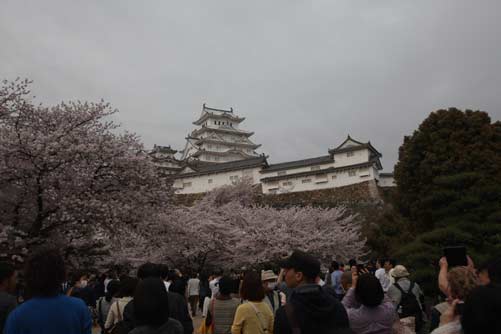 |
| The sherry blossom at Himeji with the castle in the background |
I stopped by the tourist information to make a few requests and I received some rather unexpected answers:
Me: Do you know where we can eat Kobe beef in Himeji?
Her: It is very difficult to get Kobe beef here. You should go to Kobe.
Me: Do you know any whiskey shop or liquor shop?
Her: You should go to Asahi (another town). They have a brewery there and you might find whisky there
Me: where is the post office and when is it open?
Her: It is here (she points me a place on the map). What do you want to do at the post office?
Me: To post a document
Here: Ok. This is the main post office. It is open 24/24
Me: Surprised and doubtful, but I thanked her anyway. As I suspected, when I went there at 20h, it was closed…
Well, finally, with the support of the hotel staff, I managed to get an address to taste once in my life, some Kobe beef, considered by some as the best beef in the world. The kobe beef is massaged slowly and everything is done his stress in order to have a very tender meat. Senju is a traditional Japanese restaurant, located 5 min walking distance from the station. The menu included appetizers, rice, main course (Kobe sirloin beef), dessert and tea (green tea and macha at the end). I have only been once to a traditional Japanese restaurant in Tokyo, but the food here was simply excellent and my best green tea ever. The meat was indeed exceptionally tender, but with a texture very different from what I am used too: the meat looks very white and fatty, with little red. Due to its treatment, the animal has minimal activity, and more fat than muscle. Probably not the healthiest meat, but a good experiment to do at least once in a lifetime.
More expensive than a normal restaurant, but everything was prepared by the chef in front me. If you are in Himeji and looking for a special dinner, you will not be disappointed there.
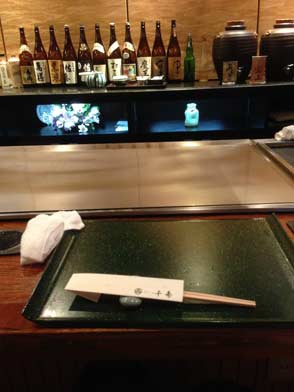 |
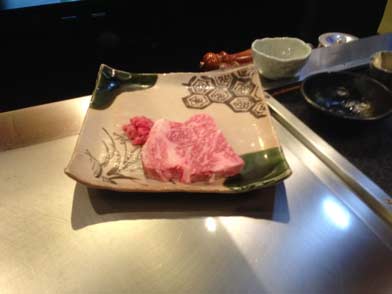 |
| Dinner in traditional restaurant at Himeji and the famous Kobe beef. |
Day 2:
On March 25 2015 was the grand opening of the castle after 6 years of renovation and 2.4 billion (about 200 mio euros) yens invested in its renovation. Since congestion was expected, the castle was opening 1 h before. I spent well 2 hours to visit the castle and its keep (note: if you intend to visit it, please make sure to arrive 20-30 before the opening. Access to the keep is limited). I went there for a visit of the western baillie, where on the volunteer guided me for about 1 hour through this “Women dormitory”. Under the reign of the Honda Family, the castle expanded, thanks to huge amount of money coming from the Shogun. The son of the lord married the daughter of the shogun and the family received the equivalent of about 500 mio euros a year as endowment! At this time, between 4000 and 5000 soldiers were based on this huge and magnificent castle. It is also called the “lucky” castle, since this is one of the few castle not destroyed by the successive governments, nor destroyed by raids during the WW2.
With that, it was time to take my leave for a rather long journey in direction to Kobuchizawa, at the foot of the Minami Alps and the Yatsugate mountain (and close to Mt Fuji as well) for the visit of the Hakushu distillery planned for the next day.
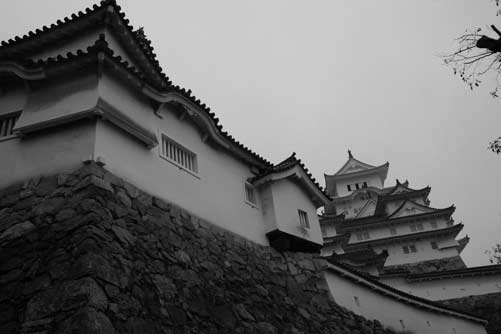 |
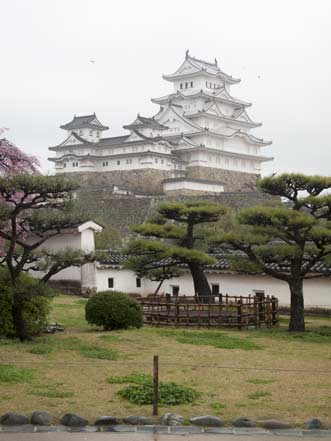 |
| Some views of the magnificient castle |
The train from Nagoya to Shiojiri follows mainly the path of a river flowing down from the mountain. The landscape is rather rough and mountainous. A nice contrast from the rather flat South and East part of Japan. I was getting stressed when closing to Shiojiri, since I had only 3 min to change of train and we arrived 4 min in late. By chance, the train waited for us and reached Kobuchiwaza. I took then the taxi to my hotel, at the Kobuchizawa Art Village and Resort and Spa. The price was fair, room pleasant and the hotel freshly renovated. Just beside the “Atelier” hotel, a 5 star hotel with 6 rooms is under construction. Unfortunately, I arrived too late to visit the Nakamura Keith Haring museum. The view from the Hotel was beautiful and I enjoyed a revitalising hot bath. Good to know, they have a charming Italian woman Christina, who speaks English fluently. In addition, the whole staff was most friendly and helpful. Highly recommended.
Day 3:
The staff drove me to the Kobuchizawa station and the journey in taxi to Hakushu distillery took me approximately 10 min (price: 2000-2600 yens).
I started with the water plant tour at 9.50. The first Suntory water plant in the region was built in 1996 and this water plant, located on the grounds of the Hakushu, was built in 2010 and produces exclusively the 2L Suntory Mineral water bottles. Pictures were not allowed on site, but the bottling lines that we saw were rather impressive, with limited human intervention and in an environment close to a white room. As part of the tasting were included one glass of the mineral water and either one glass of flavoured water, Sparkling water or Hakushu Highball. The version flavoured with tangerine was very tasty and sweet, making it a good alternative to soft drinks loaded with sugar.
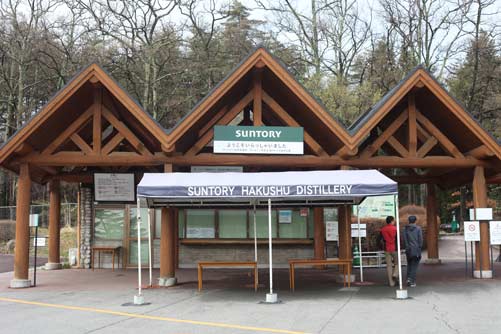 |
| The reception centre of the Hakushu distillery |
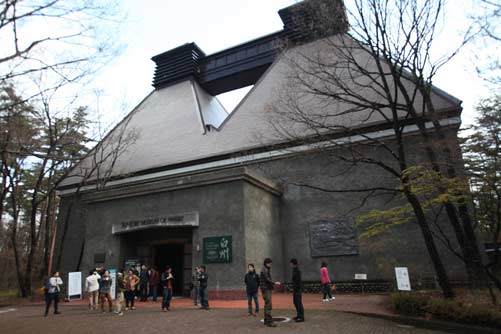 |
| The Suntory Museum at the Hakushu distillery |
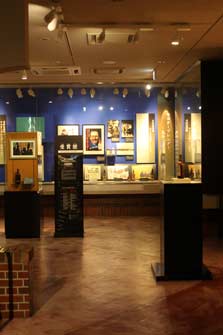 |
| A view inside the museum |
With 10 min at my disposal before the distillery tour, I made a first quick tour of the museum, which included some archives photographs, and plans of the Yamazaki distillery.
The tour started by a short video, followed by an introduction to the whisky making, before visiting the production area (mash tun, washbacks and a view of the still house). This part was rather quickly conducted, in about 30 min from the start of the video. A bus took us then to one of the warehouse. From outside, the warehouses size looks rather moderate, but once inside, these concrete warehouses could almost hold a cathedral inside. I do not recall having seen such a big warehouse in Scotland! In addition, the aroma of whisky is so intense that you feel like nosing a whisky glass.
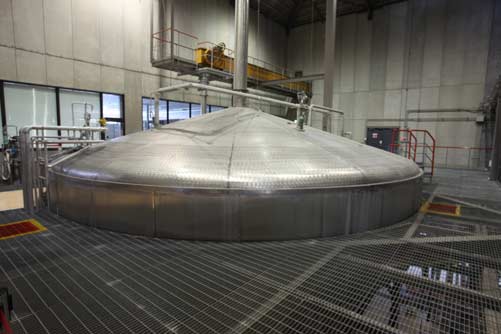 |
| The mash tun |
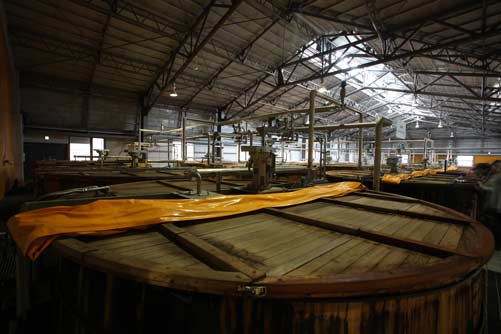 |
| The wooden washbacks |
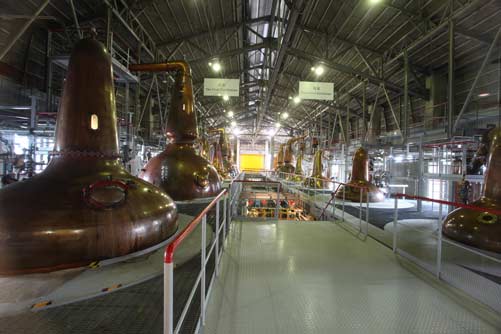 |
| View of the still house at Hakushu |
The last 15 min were dedicated to the whisky tasting back in the visitor centre. The whisky tasting consisted of a Hakushu Higballs (“half-rocks”). A surprisingly refreshing drink that enhances the pear flavours for the Hakushu. You do not feel the alcohol in the drink and you would be tempted to drink it as some pear cider. A good surprise.
A tasting prepared for me, containing the Hakushu 12 and 18 YO, Yamazaki 12 and 18 YO, Hibiki 12 and 17 YO followed this.
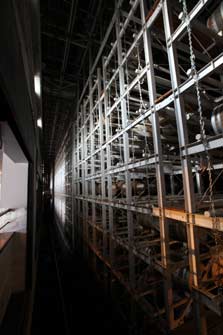 |
| Inside of the warehouse. The depth and height is impressive |
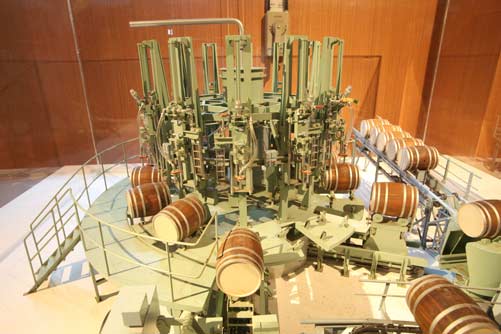 |
| A model of the filling store |
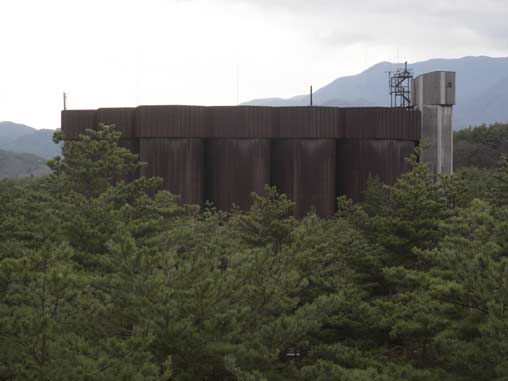 |
| View of the silo from the top of the museum |
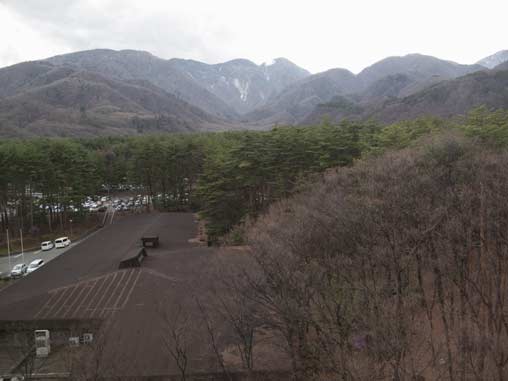 |
| View of the surroundings from the top of the museum |
As for Yamazaki distillery, you can order at the bar, 15 ml samples of whiskies, fairly priced. Starting at 100 yens for the standard Suntory blends and the NAS single malts, to 2,900 yens for the Hibiki 30, the Hakushu 25 or Yamazaki 25 YO. Since it is not every day that you have the opportunity of such whiskies, I ordered Yamazaki and Hakushu whiskies single malts to complete the full range (from the NAS version to the 25 YO), as well as the Yamazaki 1986 and 1995 single cask, the distillery only versions as well as the new Hibiki Harmony.
Some preliminary impressions:
A good 1-hour of tasting! Of note, I did only microtasting and these whiskies will be reviewed more in depth later in my standard tasting conditions. In Japan, they are very strict about drinking and driving. If you come by car, you need to design a driver that will need to carry a special identification tag around his/her neck.
When I went to the cashier, I was very pleasantly surprised to learn that this extra session was kindly paid by Suntory PR department. Thank you very much Suntory!
It was time for short lunch at the restaurant, a visit at The Barrel Shop to purchase some whiskies and to finalise the visit of the museum. The whisky museum contains a nice display retracing the history of Suntory, including photographic archives from the Yamazaki distillery on the ground floor, including old bottles. On the next levels, the displays are about the development of the distillation, from the hidden of Scotland to the moonshine in Ireland and the US and the whisky science. There also quite a few very old Scotch and American whisky bottles on display. This is well down and if take the stairs to the top, you have a very nice 360° view of the surrroundings.
The 4.30 hours on site went very fast and I really enjoyed my visit at Hakushu. I had a great tasting, but I also enjoyed very much the natural environment of the distillery, surrounded by the forest and mountains. It was then time to leave the distillery by taxi back to the train station to move towards Gotenba. Although Gotenba is about 1-1h30 drive from Hakushu distillery, there are no direct connections between the two places and you need to make a rather big detour using public transportations. From Kobuchizawa station, I had to return to Tokyo (Shinjuku station) by train and then took a bus from there to Gotenba. By chance, there was a bus every 30 min, but it took me well 45 min to find my bus, since the map provided on the website by the bus company was wrong. By chance, I met a Canadian living in Tokyo who very kindly took charge of me for 30 minutes through the bus station until we found together the right bus stop.
It was pitch dark when I arrived at Gotenba bus station. To my surprise, the bus station was almost in the middle of nowhere, with no taxi stations. By chance, a bit further there was a Hotel, where I asked the reception to call for a taxi.
I finally arrived at 20.00 at my Hotel located beside the Kirin Fuji-Gotemba station. The mount Fuji green Hotel was a good hotel located in the forest over Gotenba and very fairly prices (5000 yens the night, including breakfast).
Day 4:
On google map, there is a small path going from my hotel to the distillery and I explored it in the morning. It was indeed a small forest path, but unfortunately closed by a gate with a lock. Therefore, I had no other options than to return to the hotel, since the distance from the hotel to the distillery by the normal road was about 2 km. With a heavy rain and my luggage, taxi was the only option.
I arrived at the distillery slightly before my appointment at 10.30 with Kirin Blender Takehiko Hiura.
The Kirin distillery is a rather impressive site, with 5 huge warehouses containing each 40,000 casks, a cocktail plant and water bottle/can plant. The number of employees is about 200. For the whisky production, 3 men are working per shift. The aspect of the distillery reminds me of a grain whisky distillery.
My tour started by a circa 10 min long video showing the process from the snow melting down the Mt Fuji to the final maturation. The movie was extremely well made. I was rather impressed. Afterwards, we visited the stainless steels washbacks (72 hours maturation) that are used for both the malt and the grain, the mash tun and then a rather impressive and particular still house, with 2 wash stills, 1 pot still, 1 yeast tank, and 2 stills for Sochu production. One spirit still has been removed; therefore only 1 wash still is used. Separated by a door, there is another curiosity: the still house for the grain. The still house is composed of a variety of stills, including the standard patent column stills, but a doubler (kettle) used in many Bourbon whisky distilleries, and a serie of long neck stills. This rather unusual structure is linked to the whisky making process in Japan, where the distilleries do not exchange the products (i.e., casks) between the companies. Each Japanese company produces whisky exclusively for itself. Therefore, in order to create more variety, each distillery is making different types of whiskies. At the Kirin distillery of Fuji-Gotemba, they produce 3 types of grains whiskies and 4 types of malt whiskies. In terms of grain, there is the heavy style using 1 column still and the doubler/keetle, a lighter variant using 1 column still and long neck stills and finally the lighter and cleaner style using the continuous distillation process with more than 1 column. For the malt whisky, they have two type of yeasts and 2 types of malted barley (unpeated and slightly peated to 3 ppm). They do not have heavily peated barley whisky, since the threshold of 3 ppm is considered as the limit for the consumers. Therefore, for each type of malt, the fermentation takes place with 1 of the 2 type of yeast.
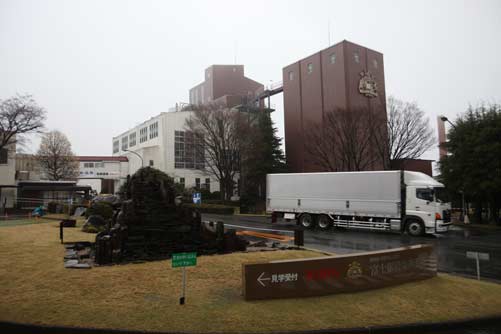 |
| View from the entrance of the Fuji-Gotemda distillery |
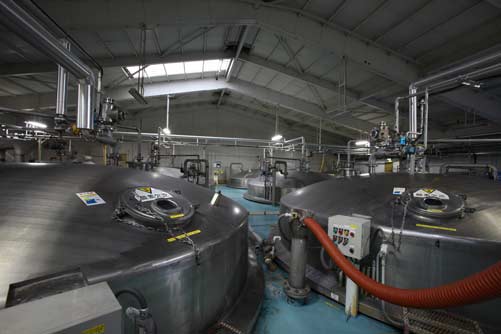 |
| The stainless steel wahbacks |
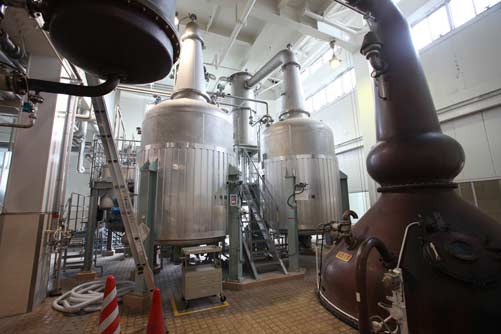 |
| Inside the still house, with the spirit still on the right and the two unsused stills for the sochu distillation |
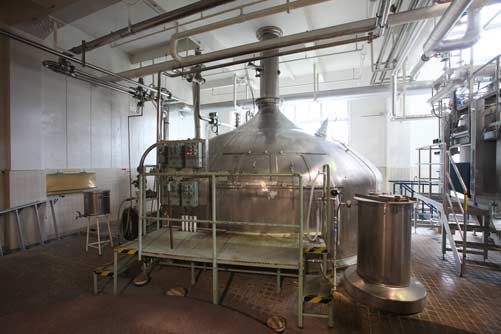 |
| The mash tun |
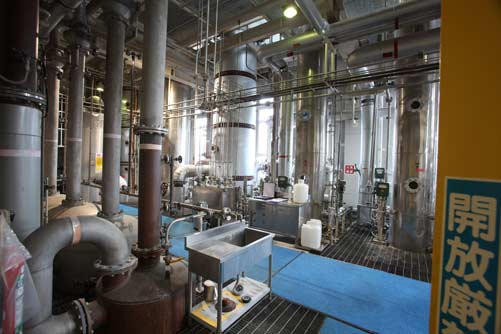 |
| The second part of the still house with the continuous stills (column) on the back and the long neck stills on the left. |
The maturation takes place exclusively bourbon casks. In order to expand their flavour range, other experimentations are ongoing or planned, but Shhh !
Since all the filling and maturation process is automated, only barrels are used, mainly from Four Roses, the US distillery owned by Kirin.
For the maturation of single malts, the casks are filled at only 50% ABV, since this was considered by Seagram as the best entry proof based on their experiments. The grain is however reduced to 62.5%. Considering the evaporation, this explains why most Kirin whiskies are produced at strength volumes of 45-46%, since this corresponds almost to cask strength after 10 years. This however limits the work of the blenders
Inside the warehouses, limited human handling was necessary. The casks are not stowed using a conventional fork lifter as in most Scottish distilleries, but using a system gliding on rails. Once the casks have been selected and taken down, they are conveyed directly towards the truck, where another apparatus is loading the casks directly in the lorry. Nicely thought to reduce back problems for the warehousemen.
Production volumes were not disclosed.
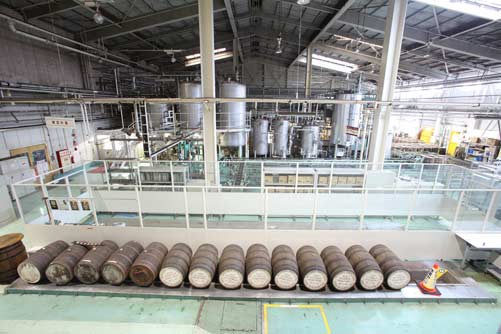 |
| The cask empyting site |
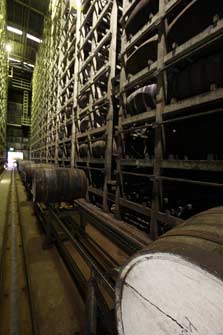 |
| Inside of the warhouse with the cask conveyor |
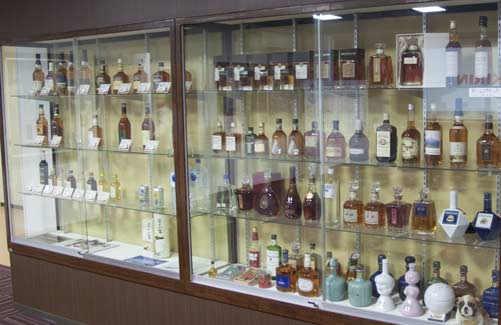 |
| Display of the different whiskies produced at the Kirin Fuji-Gotemda distillery |
| The automatic loading of casks |
After the visit of the warehouse, it was time for a tasting of Kirin Fuji-Gotemba whisky range, starting with the Kirin 50%, a very smooth blended whisky, with a rather heavy body, followed by a slightly smoky and rather spicy Robert Brown blend made for the Japanese drinkers of Scotch blends.
Sold for under 1000 yens in Japan (circa 8 euros) the bottle of 600 ml, the Kirin 50° is definitely good value.
The Blender’s Choice Single Grain and Single Malts are distillery only bottlings, as well as the 17 YO Single Malt Small batch and the 25 YO Single Grain small batch.
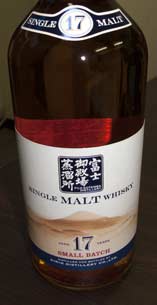 |
| The Single Malt 17 YO Small batch |
Concerning Karuizawa, Mr Hiura informed me that the decision to close the distillery that made by Mercian, before Kirin took over Mercian and they were forced to live with the consequences of this decision. However, good news, the stills will restart a new life in a new distillery!
For Part 2, click here